Things you need to know about NVMe SSDs
SSDs are one of the biggest performance upgrades for your PC, dramatically enhancing responsiveness and boot times. This storage revolution was first brought about by SATA SSDs, which are much faster than conventional hard drives. But today's best NVMe SSDs can far exceed the capabilities of even SATA SSDs. Let's take a deeper look at NVMe SSDs through the following article!
What is NVMe?
NVMee stands for Non-Volatile Memory Express. It's a storage interconnect standard that uses the ultra-fast PCI Express (PCIe) bus to communicate with your CPU, instead of the slower SATA bus used by standard hard drives and SATA SSDs. In addition to exponential leaps in maximum transfer speeds, NVMe also offers parallel transfers, queuing, and system interrupts.
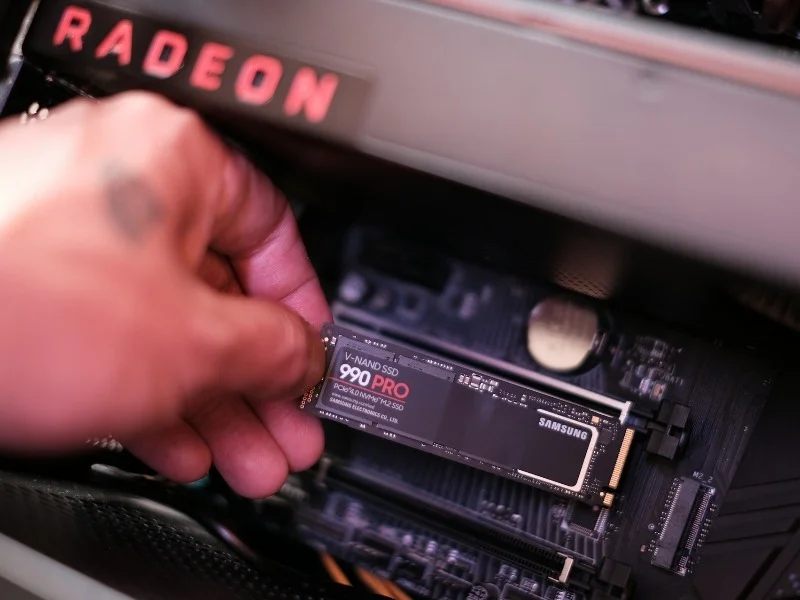 Things you need to know about NVMe SSDs Picture 1
Things you need to know about NVMe SSDs Picture 1
For high-performance consumer and enterprise storage, NVMe is the de facto standard today. Scroll through the PC list and you'll see options on laptops and higher-end PC workstations. It is also integrated into Apple mobile devices and some Android smartphone manufacturers also use NVMe storage devices. Microsoft's DirectStorage technology in Windows 11 uses the fastest SSD to reduce game load times.
Like SATA, NVMe is a connection standard, not a format. It does not describe the size or shape of the drive. On the other hand, M.2 is a form factor but is so closely related to NVMe that the two have become almost synonymous, despite their technical inaccuracies. In fact, NVMe SSDs can exist as PCIe cards, which is how some NVMe SSDs are commercially available in the PCIe form factor. Even SATA SSDs exist in M.2 form factors.
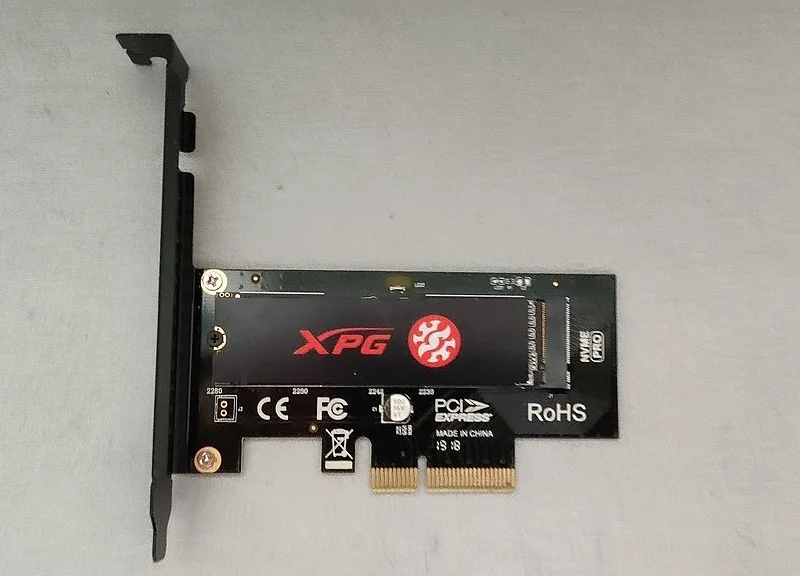 Things you need to know about NVMe SSDs Picture 2
Things you need to know about NVMe SSDs Picture 2
How fast is NVMe SSD?
NVMe was created because newer SSDs saturated even the bandwidth of SATA III. At a theoretical maximum speed of 6Gb/s (that's a gigabit, eight times smaller than a gigabyte) and a maximum transfer rate of 600MB/s, the SATA III connection is quickly saturated by high-performance SSDs. under optimal conditions. But flash storage devices can reach speeds far beyond what SATA III allows. To free silicon from its SATA shackles, NVMe was created.
Instead of doubling the bandwidth of SATA III by using two SATA interfaces per drive – a cumbersome, expensive and power-intensive idea – the industry started looking towards NVMe drives as the future of storage. digital.
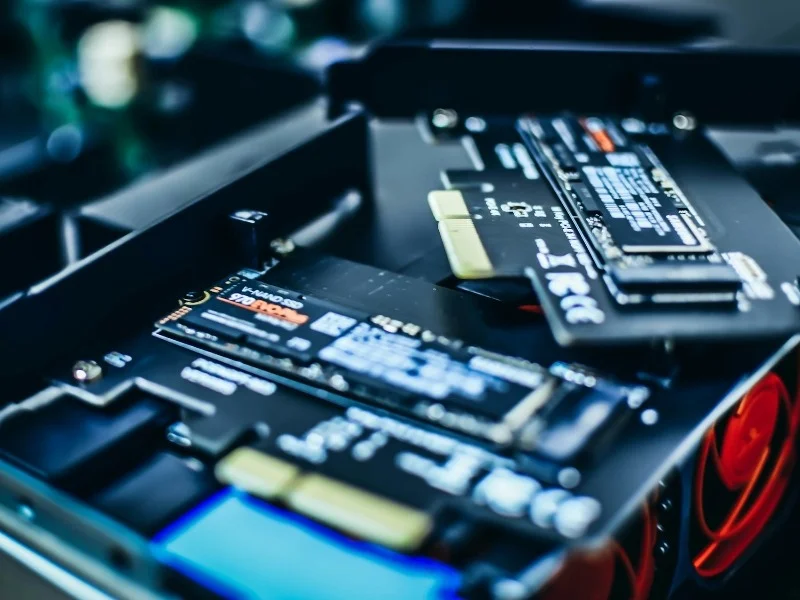 Things you need to know about NVMe SSDs Picture 3
Things you need to know about NVMe SSDs Picture 3
When sending data over the PCIe bus, NVMe can use up to 4 PCIe lanes on modern motherboards, sending data in parallel. Each PCIe lane can handle approximately 4GB/s or 32Gb/s. This speed is 5 times faster than the theoretical maximum of SATA III. Although no device has yet achieved that speed, the space for SSD mining is huge. You will see PCIe 3.0 NVMe SSDs with read speeds of about 3,500MB/s, with PCIe 4.0 and PCIe 5.0 having read speeds of about 7,000 MB/s and 12,000MB/s respectively.
The result is data transfers that are as fast as the operating system and storage bus can handle, increasing data transfer speeds exponentially and increasing machine productivity.
What's the difference between SATA SSD and NVMe?
While NVMe SSDs are significantly faster than SATA SSDs, that's not the only difference between them. The discussion about SATA and NVMe also revolves around other factors: form factor, price, capacity, and compatibility.
Choosing to upgrade to an NVMe SSD may seem like an obvious choice, but you'll need to consider your storage budget as well as system compatibility. Now, compared to SATA SSDs, NVMe SSDs can cost anywhere from around 35% more expensive (for a good PCIe 4.0 NVMe SSD) to up to 200% more expensive (for a high-end PCIe 5.0 SSD), for the same capacity. You can even choose a cheap PCIe 3.0 NVMe SSD that can cost the same as a SATA SSD.
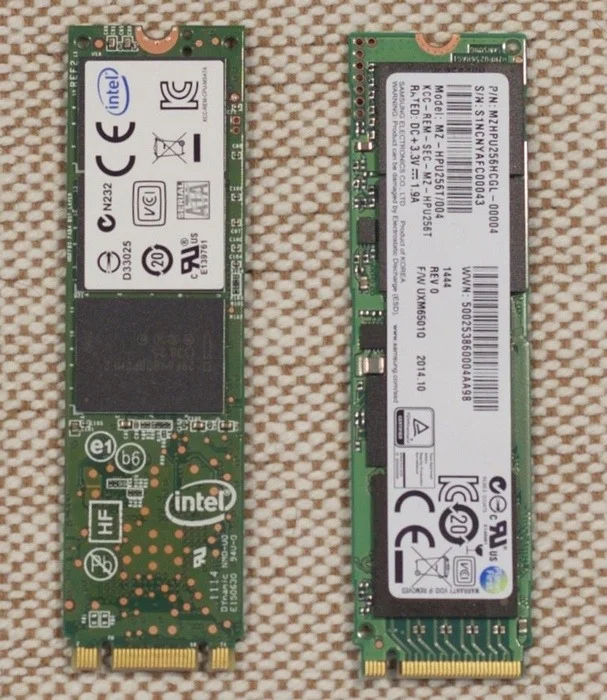 Things you need to know about NVMe SSDs Picture 4
Things you need to know about NVMe SSDs Picture 4
The advantages of NVMe SSDs over SATA SSDs are many:
- Extremely high read/write speed
- Compact form factor results in a cleaner system
- Larger capacity (up to 61TB for commercial drives)
- Can also be used for a long time
In addition to these benefits, SATA SSDs have several advantages over NVMe SSDs:
- Better price per TB
- More compatibility with older PCs
What does it take to upgrade to an NVMe SSD?
Upgrading your hard drive to an NVMe SSD is one of the biggest upgrades you can make to your computer. Compared to SATA SSDs whose only requirement is an open SATA slot on the motherboard (and there are plenty, even on older boards), NVMe SSDs are a bit more difficult to upgrade if you're using a Really old system.
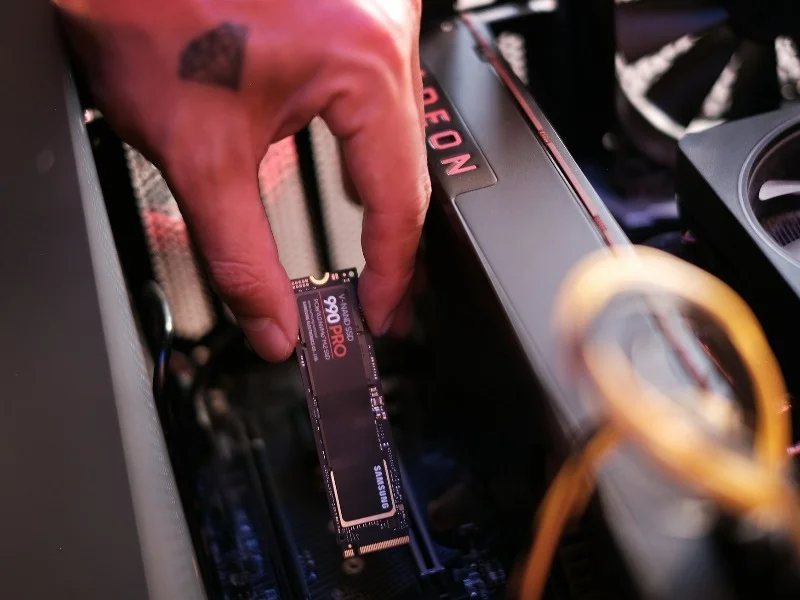 Things you need to know about NVMe SSDs Picture 5
Things you need to know about NVMe SSDs Picture 5
You will need to ensure the following if you want to upgrade to an NVMe SSD:
- Empty M.2 slot on motherboard for NVMe-enabled M.2 SSD
- BIOS supports NVMe
- Free PCIe slot for PCIe card SSD
- Proper PCIe support (e.g., PCIe 4.0 for Gen4 SSDs) for maximum performance
- M.2 heatsink for high-performance M.2 SSD
- Some technical skills for installing NVMe SSDs
NVMe SSDs today are a much bigger upgrade than regular SATA SSDs and hard drives. While an NVMe SSD is a better choice, there are cases where you may have to choose a SATA SSD over its faster sibling. No matter what type of SSD you buy, there are things you must do when running your SSD in Windows to ensure maximum performance and prolong its lifespan.
You should read it
- Many users report that Windows 11 causes NVMe SSDs to slow down
- How to install SSD hard drive NVMe M.2?
- Reasons to use SATA SSD hard drive
- NVMe 2.0 protocol supports both PCIe-connected HDDs
- What is a NVMe drive? Compare NVMe drive with SSD drive
- Try WD Blue SSD SN550 hard drive: super speedy NVMe standard
- How to add or remove 'SEC NVMe Idle Timeout' from Power Options in Windows 10
- Microsoft fixes that blue image on Windows 10 when connecting an NVMe SSD
- 7 mistakes easily 'kill' SSDs
- 4 bad sectors checking and fixing software on SSDs for free
- SSD NVMe Blue SN550 launched, cheap 1TB capacity
- Intel produced SSD drives shaped rulers, wanted to set a record of storage capacity
May be interested

Files Disappeared from External Hard Drive (Ways to Fix)

10 things to do when using SSD hard drives on Windows

iPad Pro 2024 will have a high-end OLED screen and 4TB of internal memory

It's 2024! Can AMD graphics cards surpass Nvidia in ray tracing capabilities?

5 Best SSDs for PS5 in 2024

AMD's next-gen 'Granite Ridge' CPUs are about to enter mass production, AM5 platform later this year






 Many users report that Windows 11 causes NVMe SSDs to slow down
Many users report that Windows 11 causes NVMe SSDs to slow down Difference between NVMe, SATA and M.2 SSDs
Difference between NVMe, SATA and M.2 SSDs How to install SSD hard drive NVMe M.2?
How to install SSD hard drive NVMe M.2? Reasons to use SATA SSD hard drive
Reasons to use SATA SSD hard drive NVMe 2.0 protocol supports both PCIe-connected HDDs
NVMe 2.0 protocol supports both PCIe-connected HDDs What is a NVMe drive? Compare NVMe drive with SSD drive
What is a NVMe drive? Compare NVMe drive with SSD drive